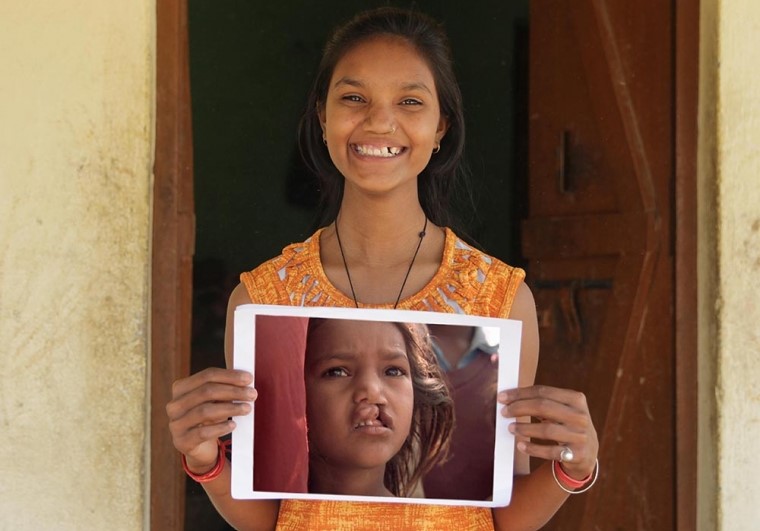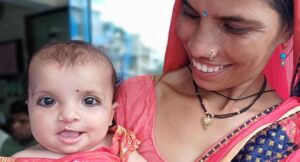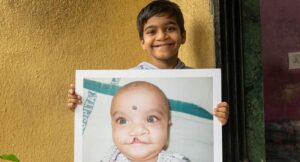NATIONAL CLEFT DAY Cleft lip & palate treatment is affordable & available in India

Team L&M
A child with cleft lip can see a significant improvement with a straightforward and inexpensive procedure. In India, cleft defects are as much a social and economic issue as they are medical. A majority of cleft births occur in rural India where poverty, illiteracy and misinformation are rampant and access to medical resources is scarce. The issue is made worse by widespread cultural and social beliefs. Cleft-faced children, particularly girls, are frequently killed at birth or left behind. Cleft-defective children abound in orphanages. Their families are ashamed of them even when they are allowed to live, other children make fun of them, and the majority of schools will not accept them. They won’t be able to get married, get a job, or fit in with the rest of society even if they do get a basic education. Despite being “normal” in every other way, children born with cleft defects are destined to become social outcasts and targets of ridicule due to their facial deformity and speech impairment.
February 8 is observed as National Cleft Day by the Indian Society of Cleft Lip, Palate and Craniofacial Anomalies and cleft charities in India. In an exclusive interaction with Life & More, Dr PV Naranayan, A Smile Train‘s Partnered Doctor, Reconstructive Surgeon, Jubilee mission Medical College & Research Institute, Thrissur, tells us all about cleft lip issue:
How serious is the cleft lip cause? What are other health implications associated with a cleft?
Cleft Lip and Palate is one of the most common facial birth differences affecting children, involving about 1 in 700 births. Since the central part of the face is involved, the appearance is a shock to the parents. If there is a Cleft palate in addition, the child will be unable to speak in a normal manner, and the speech will be incomprehensible to others. Due to these reasons, untreated cleft children may be stigmatized, and may be shunned by the society. What is unique about this problem is that if offered quality care at the appropriate time, the results can lead to near- perfect appearance and speech and such patients merge imperceptibly with the other members of society. That indeed is the goal of treatment of these children.
A child with a cleft lip and palate requires Cleft lip repair at 3 to 6 months, Cleft palate repair at around 9-18 months. These children may require multiple interventions from birth to adolescence – including secondary surgeries to improve appearance and functionality, speech therapy and orthodontic treatment and treatment may extend till around 18-20 years of age. The redeeming feature of course is that prompt and proper management can produce remarkable results.
What is the awareness level of cleft lip & palate in the country?
People in urban and semi urban areas are now well aware of the importance of this birth difference, thanks to increased general awareness and also the access to the internet. However, in the rural areas, there is still a lot of ignorance even in these ages. However, even there, awareness is better today than it was a few decades ago. Here again, Smile Train has been organizing periodic campaigns to build awareness about clefts. Also they have been systematically recruiting skilled and safe partnerships in smaller towns and in remote areas so that all patients can be treated. Even though free treatment is offered in the urban centres, when parents have to travel long distances, they lose their daily wages, and this is a constraint in patient compliance.

What are the myths/stigmas associated with the condition?
Traditionally, cleft lip and palate has been associated with a lot of myths. Exposure of the mother to eclipses is one of them. Also, the mother is the subject of abuse by the in- laws and is accused of being the cause of cleft in the child, though both though parents share equal responsibility. There are some communities, where the daughter- in-law is rejected, and not taken back to the household after delivering such a child. Even later, such children are the brunt of ridicule by their peers at school, and society in general. Thus it is imperative that they obtain optimal and timely treatment.
Please tell us about the recent advances in the field of cleft surgery/ treatment?
While the surgical treatment of Cleft Lip and Palate continue to undergo refinements for improvements in the results, advances are being made in various aspects. For instance, with the latest 3D printing technology Smile Train has partnered in developing a teaching model, where a replica of the cleft child’s lip and palate are fabricated and used to teach the trainees so that they can avoid a learning curve when they commence to operate on babies. Advances in Imaging technology like Dynamic MRI Scans are helping in the diagnosis of speech errors and hence helping in more optimal treatment. Major advances in Genetic research in centres around the world including one such Research Project at our own centre that is sponsored by Smile Train will help identifying any gene(s) that play a causal role in the development of Cleft babies.
How important is safety in cleft surgery? What are the opportunities for building regional capacities to ensure safety and quality in surgery?
Cleft surgeries are elective surgeries in small children. Ideally these should be without major complications. It is imperative that the medical facility where the child is treated should have all the necessary infrastructure and trained personnel to perform these procedures. Then, and only then can we achieve the goal of safe surgeries for these patients. There are some organisations which descend on different venues in India and other LMICs with a team of personnel, operate in make-shift arrangements, and leave for their respective countries immediately after this. Complications do arise in such a set up, and the poor patients have to frantically search for a cleft care facility that can do the remedial management. Smile Train does not believe in such a practice. Prospective medical personnel and Centres are very carefully chosen for partnership only if they can ensure Safe practices. Even after signing as partners, periodic audits are done on site to make sure that there are no lapses in Safety Protocols.
Do patients come from the rural or the urban sector?
We get cleft patients from across the nation, both from the urban and rural settings.
What message would you like to give to the families who have cleft-affected children?
With the kind of treatment of clefts available today, children can live full and healthy lives. Organisations like Smile Train help all patients in obtaining safe, quality treatment without having to worry about the financial burden. So, they should not shy away from approaching a doctor for treatment.


